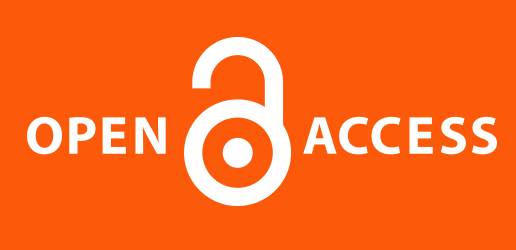
The Impact of Customer Management on Enterprise Performance -The Mediating Role of Innovation Capability
摘要
In the Internet era, customers are transitioning from passive consumers to active participants and co-creators of value, with their knowledge, needs, and relationships becoming strategic resources for enterprises. While existing literature has not fully explored the relationship between customer management (comprising customer knowledge management and customer relationship management), innovation capability, and enterprise performance, this study establishes a research framework analyzing these variables. Through questionnaire data collection and SPSS analysis, it demonstrates that customer management enhances enterprise performance via the mediating role of innovation capability, while also identifying research limitations and suggesting future directions.1 Research Background
The digital era has transformed customers from passive consumers to active co-creators, with their engagement directly influencing business success. Enterprises now leverage social media and digital platforms to gather customer feedback, driving product innovation and strategic adaptation through effective customer knowledge management (CKM) and relationship management (CRM). China's patent data (55.1% industrialization rate in 2024, with 75.3% from independent R&D) demonstrates how customer-driven innovation enhances competitiveness. By integrating CKM to boost loyalty and CRM to foster partnerships, companies achieve performance gains through improved innovation capabilities, creating mutual value in today's customized economy. This study investigates how CKM and CRM, mediated by innovation capability, impact enterprise performance[1].
2 Research Hypothesis
2.1 Customer Management and Firm Performance
Extant research consistently demonstrates customer management's performance-enhancing effects through dual pathways. Customer knowledge management drives innovation-mediated performance gains (Bekata et al., 2024), with open innovation partially mediating this relationship, while also enabling market consolidation through customer-oriented knowledge acquisition (Al Koliby et al., 2022). Complementarily, customer relationship management creates value via multichannel engagement and data-driven optimization (Čierna et al., 2022; Li et al., 2023), collectively showing how both knowledge utilization (Bekata et al., 2024; Al Koliby et al., 2022) and relationship cultivation (Čierna et al., 2022; Li et al., 2023) transform customer insights into competitive advantage through innovation mediation and operational improvements.
Based on the above views and analyses, this paper proposes the following research hypotheses:
H1a: Customer knowledge management has a positive contribution to firm performance
H1b: Customer relationship management has a positive contribution to firm performance
2.2 Customer Management and Innovation Capability
Scholarly research elucidates two complementary pathways through which customer management enhances innovation capability. Customer knowledge management, operationalized through four key dimensions (managing customer knowledge, customer-owned knowledge, customer-needed knowledge, and customer-created knowledge), functions as an integrated knowledge-to-innovation process that facilitates targeted product development through systematic knowledge utilization . Concurrently, customer relationship management drives innovation through service innovation and social network interactions, with Diffley et al. (2018) demonstrating its indirect effects via strengthened customer connections, while De Muylder et al. (2025) emphasize its market creation potential. These findings collectively establish that while customer knowledge management creates value through structured knowledge processing cycles (Zhang Jiemei et al., 2015), customer relationship management contributes through dynamic interaction mechanisms (Diffley et al., 2018; De Muylder et al., 2025), together forming a comprehensive framework for innovation capability development[2].
Based on the above views and analyses, this paper proposes the following research hypotheses:
H2a: Customer knowledge management has a positive contribution to innovation capability
H2b: Customer relationship management has a positive contribution to innovation capability
2.3 Innovation capability on firm performance
Research demonstrates how innovation capability enhances firm performance through multiple pathways. Shen et al. (2023) establish that customer forecasting capability in customized industries promotes sustainable innovation, bridging innovation capability and performance through both product and service innovation - particularly via differentiated customer experiences that drive high-quality development. Complementing this, Pan et al. (2019) reveal how technology learning mechanisms (acquisition, digestion, and development) impact performance, with technology development showing the most direct effect through market-oriented and process-oriented innovations. Their work illustrates the "input-absorption-transformation-output" value cycle in high-tech industries, where stronger technological capabilities create competitive barriers that increase market share and profitability (Pan et al., 2019). These studies collectively confirm that enhanced innovation capability - whether through customer-driven approaches (Shen et al., 2023) or technological learning processes (Pan et al., 2019) - significantly improves enterprise performance.
Based on the above views and analyses, this paper proposes the following research hypotheses:
H3: Innovative capability has a positive contribution to firm performance[3]
2.4 The mediating role of innovation capability
Research consistently demonstrates innovation capability's critical mediating role between customer management and firm performance. Hou et al. (2022) reveal how innovation networks in high-tech clusters enhance technology learning, with technology development directly improving innovation performance while acquisition and digestion exert indirect effects. Their work further shows executive cognition's impact on business model innovation in startups, mediated by entrepreneurial bricolage and moderated by environmental dynamics. Complementing this, Alkhalaf et al. (2024) conceptualize innovation capability as a "transformation switch" in customer-centered management, where market research and co-creation activities convert customer insights into innovation outcomes that drive satisfaction, market share, and revenue growth. These studies collectively position innovation capability as both (1) a measurable indicator of customer management's effectiveness (Hou et al., 2022) and (2) a strategic mechanism for translating customer knowledge into competitive advantage (Alkhalaf et al., 2024), particularly through technology development and customer co-creation processes[14].
Based on the above views and analyses, this paper proposes the following research hypotheses:
H4a: Innovation capability has a mediating effect between customer knowledge management and firm performance
H4b: Innovation capability has a mediating effect between customer relationship management and firm performance
Figure 1 Research Model
2.5. Research Methods
The study employed a questionnaire-based survey conducted in May 2025, targeting individuals with corporate work experience across various regions and occupations, including office workers and self-employed individuals. Utilizing electronic distribution methods, 350 responses were collected. Through rigorous screening that eliminated incomplete or irregularly completed questionnaires, 291 valid responses were obtained, yielding an 83.1% effective response rate.
2.6 Reliability analysis
The reliability analysis demonstrates excellent internal consistency across all constructs: customer knowledge management (CKM, α=0.941), customer relationship management (CRM, α=0.943), and innovation capability (IC, α=0.926) all show Cronbach's alpha coefficients exceeding 0.9, indicating high reliability. Firm performance (EP, α=0.891) also demonstrates acceptable reliability above the 0.8 threshold, confirming the questionnaire's suitability for further research[5].
Table 5 Reliability Analysis Results of Core Variables
| Name | CITC | Cronbach’s Alpha if Item Deleted | Cronbach’s Alpha |
| CKM1 | 0.839 | 0.927 | |
| CKM2 | 0.848 | 0.925 | |
| CKM3 | 0.843 | 0.926 | 0.941 |
| CKM4 | 0.833 | 0.928 | |
| CMK5 | 0.835 | 0.928 | |
| CRM1 | 0.849 | 0.930 | |
| CRM2 | 0.858 | 0.928 | |
| CRM3 | 0.809 | 0.937 | 0.943 |
| CRM4 | 0.872 | 0.925 | |
| CRM5 | 0.842 | 0.931 | |
| IC1 | 0.823 | 0.906 | |
| IC2 | 0.827 | 0.904 | 0.926 |
| IC3 | 0.828 | 0.904 | |
| IC4 | 0.835 | 0.902 | |
| EP1 | 0.788 | 0.845 | |
| EP2 | 0.775 | 0.854 | 0.891 |
| EP3 | 0.799 | 0.833 |
2.7 Validity Analysis
Validity analysis typically refers to the effectiveness and accuracy of the questionnaire scales, i.e., analyzing whether the design of the questionnaire items is reasonable. As shown in Table 6, the KMO test result for this questionnaire is 0.966, which exceeds 0.9. Additionally, the Bartlett’s sphericity test shows a significance level of p = 0.000***, indicating a significant correlation among variables and confirming the suitability of factor analysis.
| KMO and Bartlett’s Test | |
| KMO Value | 0.931 |
| Bartlett’s Chi-Square Approx. | 4330.771 |
| Degrees of Freedom (df) | 136 |
| p-value | 0.000 |
Note: ***、** 、 * represent significance levels of 1%, 5%, and 10%, respectively.
The confirmatory factor analysis (CFA) results (Table 7) demonstrated strong measurement properties: customer knowledge management, customer relationship management, and innovation capability showed excellent reliability (CR>0.9) and convergent validity (AVE>0.7), while firm performance approached these thresholds (CR≈0.9, AVE>0.7). All core variables exhibited good discriminant validity, with AVE square roots exceeding 0.8, confirming the robustness of the measurement model.
| Variable | Item | Standardized Factor Loading | CR | AVE | Square Root of AVE | |||
| CKM | CKM1CKM2CKM3CKM4CKM5 | 0.873 0.882 0.878 0.862 0.864 | 0.760 | 0.941 | 0.872 | |||
| CRM | CRM1CRM2CRM3CRM4CRM5 | 0.8770.895 0.838 0.901 0.875 | 0.770 | 0.944 | 0.877 | |||
| IC | IC1IC2IC3IC4 | 0.8680.868 0.871 0.878 | 0.759 | 0.926 | 0.871 | |||
| EP | EP1EP2EP3 | 0.8580.840 0.871 | 0.733 | 0.892 | 0.856 | |||
2. 8 Correlation Analysis
Correlation analysis (Table 8) revealed significant positive relationships between firm performance and customer knowledge management (r=0.460, p<0.01), customer relationship management (r=0.493, p<0.01), and innovation capability (r=0.488, p<0.01). Strong intercorrelations were also observed among customer knowledge management, customer relationship management (r=0.513, p<0.01), and innovation capability (r=0.488, p<0.01), as well as between customer relationship management and innovation capability (r=0.515, p<0.01), providing preliminary support for the study's hypotheses.
| Variable | Mean | Std. Dev. | Firm Performance | Customer Knowledge Management | Customer Relationship Management | Innovation Capability | Gender | Age | Education | Industry | Work Experience |
| EP | 3.993 | 0.955 | 1 | ||||||||
| CKM | 3.953 | 1.036 | 0.460** | 1 | |||||||
| CRM | 3.959 | 1.080 | 0.493** | 0.513** | 1 | ||||||
| CI | 3.907 | 1.021 | 0.443** | 0.488** | 0.515** | 1 | |||||
| Gender | 1.512 | 0.501 | 0.027 | -0.027 | 0.051 | 0.033 | 1 | ||||
| Age | 3.553 | 1.171 | -0.188** | -0.152** | -0.177** | -0.180** | -0.026 | 1 | |||
| Education | 2.536 | 0.660 | -0.235** | -0.161** | -0.207** | -0.159** | 0.064 | -0.033 | 1 | ||
| Industry | 2.423 | 0.495 | -0.254** | -0.258** | -0.216** | -0.178** | 0.028 | 0.089 | 0.053 | 1 | |
| Work Experience | 4.000 | 1.281 | -0.141* | -0.152** | -0.166** | -0.131* | -0.091 | 0.338** | -0.069 | 0.158** | 1 |
* p<0.05 ** p<0.01
3 Research Results
3. 1 Descriptive statistical analysis
SPSS software was used to analyze the characteristics of the 291 valid questionnaires collected, focusing on five aspects (gender, age, education level, occupation, and work experience). The specific analysis results are shown in Table 9 below.
| Category | Option | Frequency | Percentage (%) | Cumulative Percentage (%) |
| 1.Your gender is: | Male | 140 | 48.80 | 48.80 |
| Female | 148 | 51.20 | 100.00 | |
| 2. Your age is: | 18–25 years | 77 | 21.99 | 21.99 |
| 26–35 years | 90 | 29.55 | 51.55 | |
| 36–50 years | 69 | 24.74 | 76.29 | |
| 51–65 years | 38 | 18.56 | 94.85 | |
| Over 65 years | 14 | 5.15 | 100.00 | |
| 3.Your education level is: | High school (or below) | 35 | 9.28 | 9.28 |
| Associate degree | 94 | 27.84 | 37.11 | |
| Bachelor’s degree or above | 159 | 62.89 | 100.00 | |
| 4.Your occupation is: | Office worker | 193 | 57.73 | 57.73 |
| Self-employed/Freelancer | 95 | 42.27 | 100.00 | |
| 5.Your work experience is: | 0–6 months | 26 | 6.19 | 6.19 |
| 6 months–1 year | 39 | 9.97 | 16.15 | |
| 1–3 years | 51 | 14.78 | 30.93 | |
| 3–5 years | 44 | 15.81 | 46.74 | |
| Over 5 years | 128 | 53.26 | 100.00 | |
| Total | 291 | 100.00 | 100.00 |
The sample demographics (Table 9) show a balanced gender distribution (48.80% male, 51.20% female), with respondents primarily aged 26-35 (29.55%) and 36-50 (24.74%). Most participants held bachelor's degrees or higher (62.89%), and over half had more than 5 years of work experience (53.26%), ensuring reliable feedback due to their educational background and organizational familiarity. This diverse representation across age, education, and experience levels enhances the study's validity.
3.2 Regression Analysis and Mediation Effect Analysis
The SPSS regression analysis (Tables 10-11) confirmed all hypothesized relationships: customer knowledge management (β=0.347, p<0.001) and customer relationship management (β=0.361, p<0.001) significantly improved firm performance (supporting H1a-H1b), while both also enhanced innovation capability (β=0.436 and 0.444 respectively, p<0.001; H2a-H2b supported). Crucially, innovation capability itself positively impacted firm performance (β=0.339, p<0.001), validating H3 and confirming its mediating role between customer management practices and organizational outcomes.
Table 10 Regression Analysis Results for Innovation Capability
| Variable Name | Innovation Capability | Innovation Capability | Innovation Capability |
| Model | M4-1 | M4-2 | M4-3 |
| Control Variables | |||
| Gender | 0.076 (0.655) | 0.096 (0.919) | 0.022 (0.212) |
| Age | -0.131* (-2.493) | -0.090 (-1.886) | -0.077 (-1.630) |
| Education | -0.252**(-2.859) | -0.143 (-1.785) | -0.097 (-1.213) |
| Industry | -0.303* (-2.557) | -0.098 (-0.891) | -0.130 (-1.212) |
| Work Experience | -0.051 (-1.058) | -0.019 (-0.422) | -0.013 (-0.299) |
| Constant | 5.834**(13.346) | 3.031** (5.804) | 3.002**(5.930) |
| Direct Effects | |||
| CKM | 0.436**(8.180) | ||
| CRM | 0.444**(8.734) | ||
| Mediating Effects | |||
| R² | 0.089 | 0.262 | 0.282 |
| Adjusted R² | 0.073 | 0.247 | 0.266 |
| F-value | 5.547 | 16.844 | 18.558 |
| Variable Name | Firm Performance | ||||||
| M4-4 | M4-5 | M4-6 | M4-7 | M4-8 | M4-9 | M4-10 | |
| Control Variables | |||||||
| Gender | 0.072 (0.684) | 0.088 (0.904) | 0.028 (0.290) | 0.050 (0.536) | 0.066 (0.695) | 0.023 (0.247) | 0.046 (0.472) |
| Age | -0.124**(-2.616) | -0.091* (-2.072) | -0.080 (-1.836) | -0.071 (-1.671) | -0.071 (-1.641) | -0.064 (-1.495) | -0.080 (-1.792) |
| Education | -0.340** (-4.279) | -0.254** (-3.411) | -0.215** (-2.889) | -0.193** (-2.670) | -0.221** (-3.040) | -0.194** (-2.672) | -0.255** (-3.405) |
| Industry | -0.421** (-3.931) | -0.258* (-2.535) | -0.281** (-2.821) | -0.214* (-2.180) | -0.236* (-2.381) | -0.253** (-2.603) | -0.319** (-3.166) |
| Work Experience | -0.051 (-1.153) | -0.025 (-0.601) | -0.019 (-0.481) | -0.011 (-0.281) | -0.020 (-0.511) | -0.017 (-0.423) | -0.033 (-0.813) |
| Constant | 6.412** (16.222) | 4.183**(8.632) | 4.107** (8.752) | 3.296** (6.654) | 3.482** (7.004) | 3.473** (7.158) | 4.436** (9.479) |
| Direct Effects | |||||||
| CKM | 0.347** (7.008) | 0.223** (4.194) | 0.246** (4.609) | ||||
| CRM | 0.361** (7.668) | 0.264** (5.131) | 0.268** (5.169) | ||||
| Mediating Effects | |||||||
| IC | 0.231**(4.327) | 0.211**(3.934) | 0.339**(6.809) | ||||
| R² | 0.150 | 0.275 | 0.296 | 0.337 | 0.320 | 0.332 | 0.269 |
| Adjusted R² | 0.135 | 0.260 | 0.281 | 0.320 | 0.303 | 0.316 | 0.254 |
| F-value | 10.037 | 17.963 | 19.861 | 20.530 | 19.032 | 20.102 | 17.421 |
The mediation analysis (Table 11) revealed partial mediation effects: when including innovation capability in the model, the direct effects of both customer knowledge management (β decreased from 0.347 to 0.246, p<0.001) and customer relationship management (β decreased from 0.361 to 0.268, p<0.01) on firm performance were reduced, while innovation capability remained significant (p<0.01), supporting H4a and H4b that innovation capability partially mediates these relationships.
4 Research Conclusions
This study's analysis of 291 samples using validated scales and SPSS analysis confirmed all six hypotheses, demonstrating that customer knowledge management (CKM) and customer relationship management (CRM) both directly enhance firm performance (H1a-b) and improve innovation capability (H2a-b), which in turn directly boosts performance (H3) and partially mediates the CKM/CRM-performance relationship (H4a-b). The findings reveal customer management's dual mechanisms of influence - directly through operational optimization and indirectly by fostering innovation - providing both theoretical insights into innovation mediation and practical guidance for strengthening organizational competitiveness.
Reference
- [1]Al Koliby, I. S., Mohd Suki, N., & Abdullah, H. H. (2022). Linking knowledge acquisition, knowledge dissemination, and manufacturing SMEs' sustainable performance: The mediating role of knowledge application. The Bottom Line, 35(4), 185-202.
- [2]Alkhalaf, T., & Al-Tabbaa, O. (2024). The effect of ability, motivation and opportunity (AMO) on SMEs' innovation performance. Creativity and Innovation Management, 33(1), 21-38.
- [3]Bekata, A. T., & Kero, C. A. (2024). Customer orientation, open innovation and enterprise performance: Evidence from Ethiopian SMEs. Cogent Business & Management, 11(1), 2320462.
- [4]Cierna, H., & Sujova, E. (2022). Differentiated customer relationship management - A tool for increasing enterprise competitiveness. Management Systems in Production Engineering.
- [5]De Muylder, C., La Falce, J. L., Guerra, J. R. L., et al. (2025). Model of acceptance and use of social customer relationship management in micro and small enterprises. International Journal of Innovation, 13(1), e27096.
如何引用
参考
Al Koliby, I. S., Mohd Suki, N., & Abdullah, H. H. (2022). Linking knowledge acquisition, knowledge dissemination, and manufacturing SMEs' sustainable performance: The mediating role of knowledge application. The Bottom Line, 35(4), 185-202.
Alkhalaf, T., & Al-Tabbaa, O. (2024). The effect of ability, motivation and opportunity (AMO) on SMEs' innovation performance. Creativity and Innovation Management, 33(1), 21-38.
Bekata, A. T., & Kero, C. A. (2024). Customer orientation, open innovation and enterprise performance: Evidence from Ethiopian SMEs. Cogent Business & Management, 11(1), 2320462.
Cierna, H., & Sujova, E. (2022). Differentiated customer relationship management - A tool for increasing enterprise competitiveness. Management Systems in Production Engineering.
De Muylder, C., La Falce, J. L., Guerra, J. R. L., et al. (2025). Model of acceptance and use of social customer relationship management in micro and small enterprises. International Journal of Innovation, 13(1), e27096.
版权
未提供许可协议









